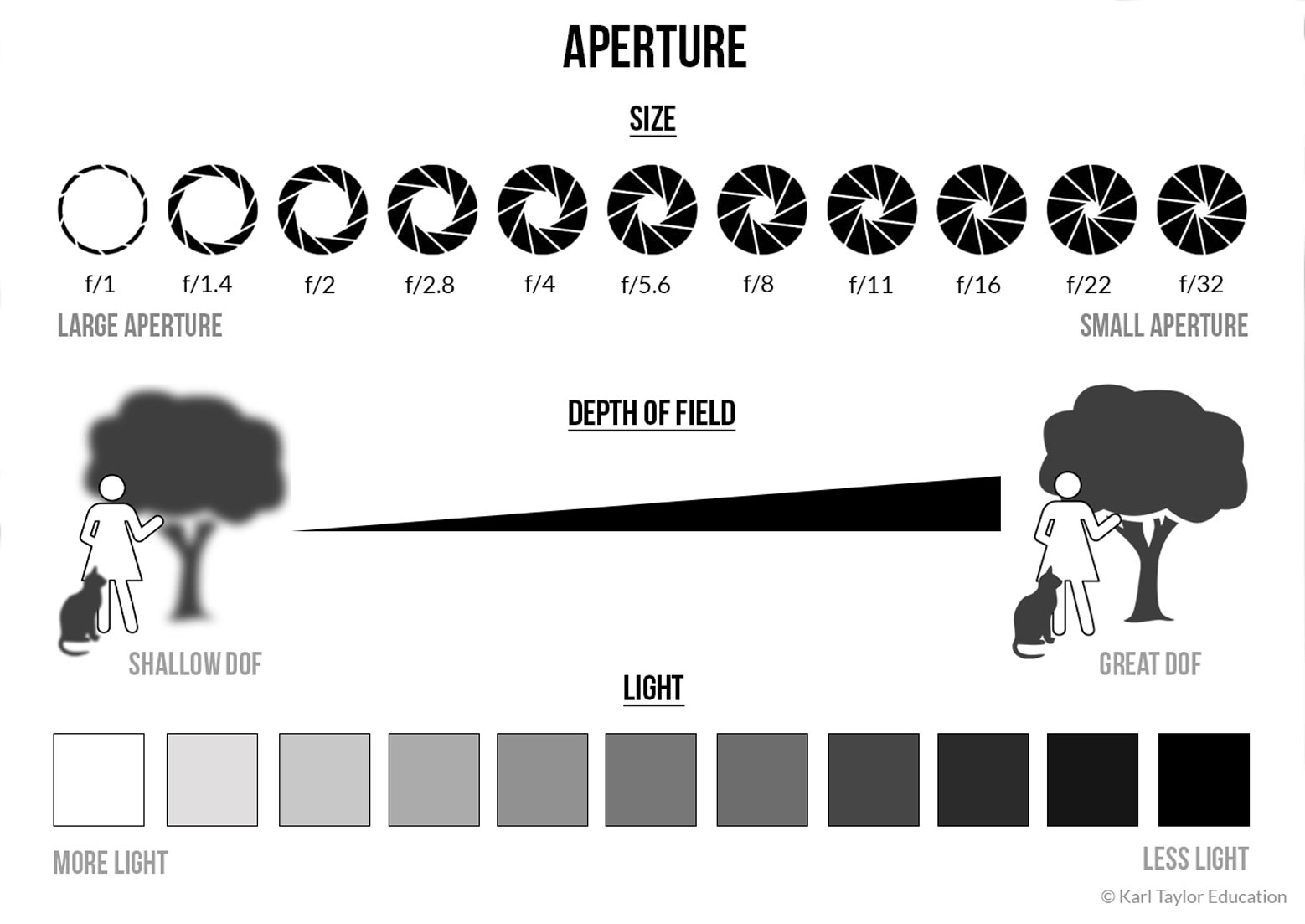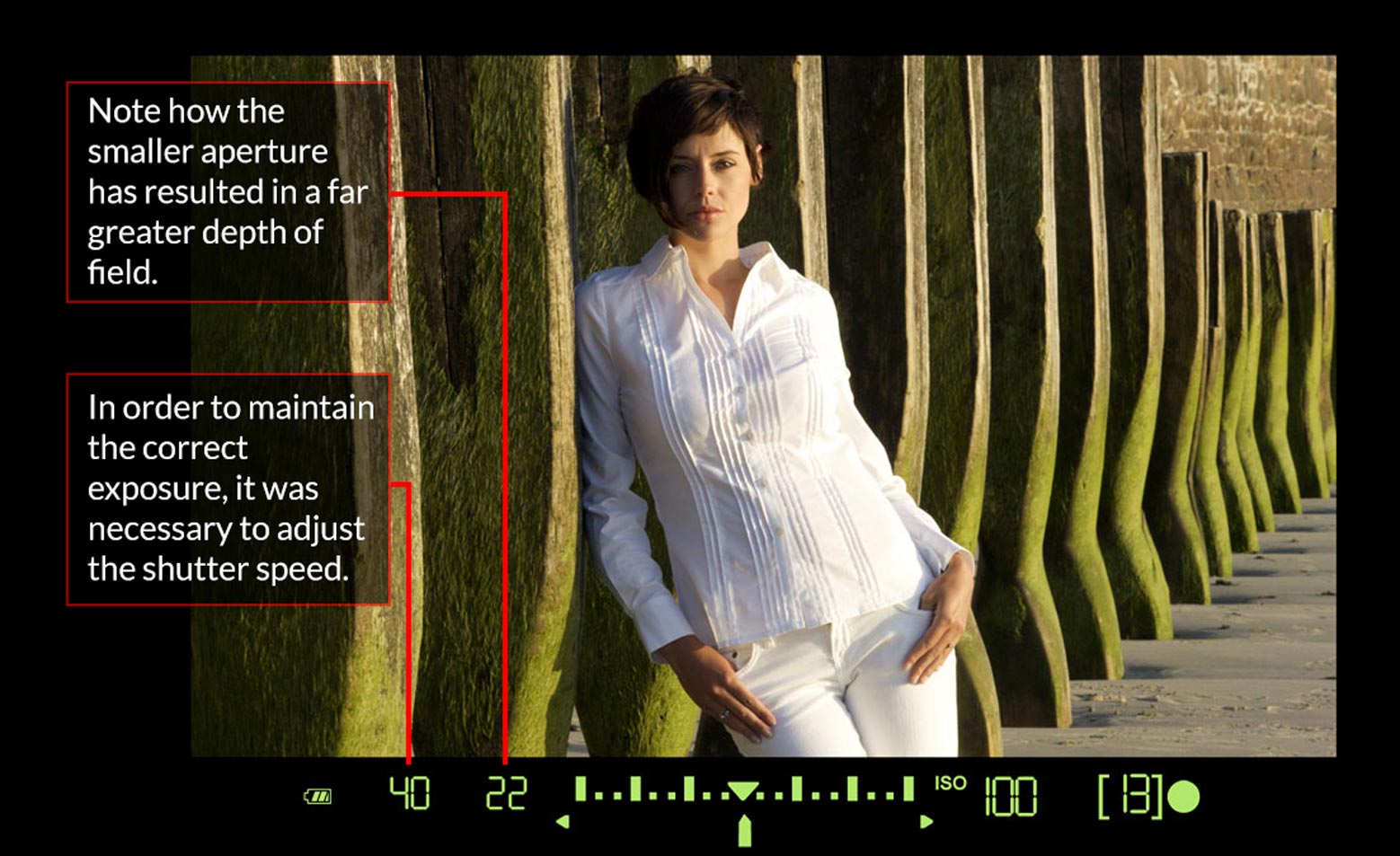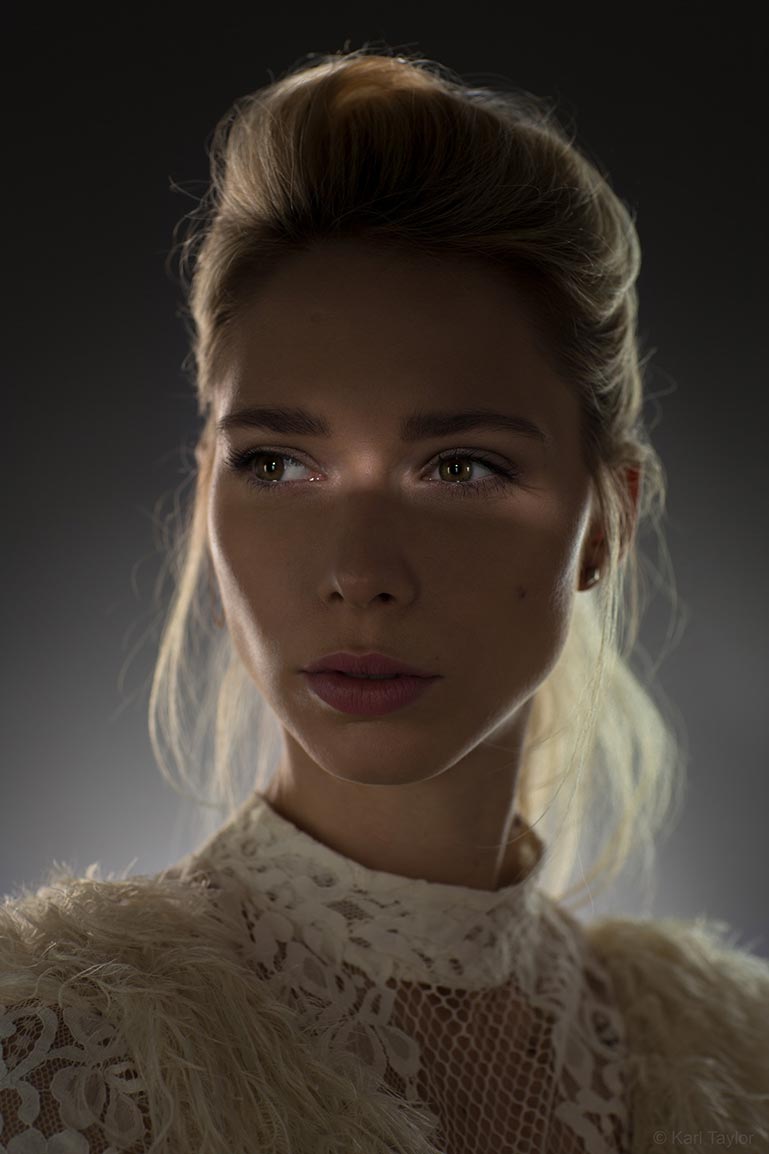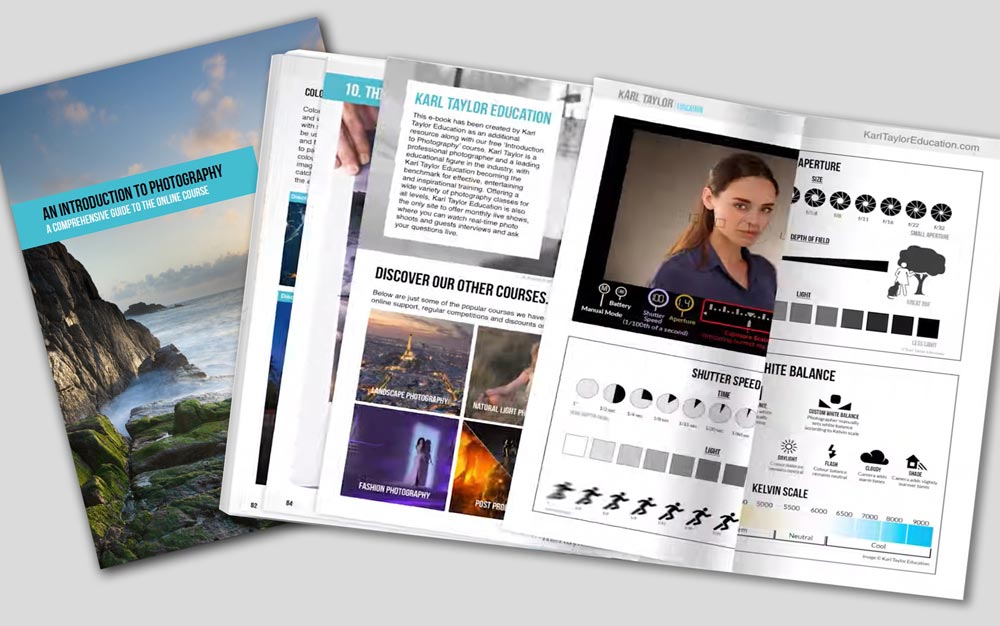05. Aperture and Depth of Field
Aperture is one of the six essential requirements for creating an image — it not only controls how much light your camera is able to record, but also the depth of field. Depth of field (DoF) is an important compositional and creative element in any image so it’s important to understand what it is and how to control it.
What is aperture?
As you would have understood from chapter one of this course, aperture refers to the size of the opening that light passes through before hitting your camera’s sensor. By controlling the aperture, we can control how much light is recorded in an image as well as the depth of field. The larger the aperture, the more light is recorded and the shallower the depth of field. With smaller apertures, less light is recorded and the depth of field is greater. Aperture is recorded in f-stops and is shown by the symbol 'f'.

Large aperture vs small aperture
Aperture is something that easily confuses new photographers, but it’s important that you understand the difference between large and small apertures. When referring to ‘large’ apertures, we are not referring to a large number value. Instead, we are referring to the aperture or exposure value. So, for example, f1.4 would be considered a large aperture, while f22 would be considered a small aperture.
Large aperture size = Smaller f-stop number = Shallow DoF
Small aperture size = Larger f-stop number = Large DoF

What is depth of field?
Depth of field is the sharpness range either side of a focus point. This is controlled by the aperture. As you will have seen from the example above, larger apertures (smaller f-stop numbers) result in a shallower depth of field, where less is sharp, while smaller apertures (higher f-stop numbers) will result in a greater depth of field, where more is sharp.


How to control depth of field
There are three different factors that influence depth of field — aperture, distance from your subject and magnification. First, let’s look at how to change your depth of field using different aperture settings.
If you’re shooting in Auto mode, your camera will decide the ‘best’ aperture for you. If you’re shooting in Aperture Priority mode, you can simply set the aperture by using your camera’s control dial and your camera will automatically determine the shutter speed. If you’re shooting in Manual mode, you have the greatest level of creative control, but you have to do the job of balancing your aperture and shutter speed to get the best exposure. In any of these modes, you can simply adjust your aperture using either the front or back control wheel of your camera.

Interested in portrait photography? Click here.
Changing the aperture is the easiest way to control depth of field. As we've already explained, larger apertures result in shallower depth of field while smaller apertures result in larger depth of field. Although this may be the easiest way to adjust the depth of field, it is not the only way.
The distance from your subject will also affect depth of field. The closer you are to the subject, the shallower your depth of field will be (and vice versa). At the same aperture, shooting closer to your subject will give a much shallower depth of field, while shooting further away will give a much greater depth of field. This is due to magnification, which we'll look at next.
Magnification is the third factor that affects depth of field. In this case, magnification can refer to the sensor size, focal length and distance from the subject. For example, a larger sensor size, longer focal length or closer focusing distance will result in shallower depth of field. At the same aperture, full frame cameras will have a shallower depth of field compared to crop sensor cameras. Again, at the same aperture, medium format cameras will have an even shallower depth of field than full frame cameras.
Lenses and depth of field
In addition to the aperture, distance from your subject and magnification, the lens you use can also impact depth of field. Different lenses have different depth of field characteristics, which is caused by the magnification of the lens. The greater the magnification (as with telephoto lenses), the shallower the depth of field, and vice versa with wide angle lenses.
This means that if you’re shooting at f4 using a 24mm focal length 10m from your subject, you will have much greater depth of field than if you were shooting f4 using a 200mm focal length 10m from the same subject.

Interested in creative portrait photography? Click here.
Depth of field examples
This natural light portrait image below was shot using an aperture of f1.2, which means although it was enough to keep the subject sharp, the foreground and background are out of focus.

Interested in natural light portrait photography? Click here.
Full open apertures, such as was used in the image above, are great for photographing people as it allows us to blur the background and bring attention to the eyes or face of the subject. On the other hand, if you’re photographing landscapes, generally we want more depth of field so that we can see into the distance, which is why smaller apertures (such as f16) are often used.

Interested in fashion photography? Click here.
An aperture of f22 was used for this Fashionscape image above. You can see how the depth of field runs much further, allowing the model and the background to remain sharp (you can see how this image was shot in the full tutorial here).
All content © Copyright Karl Taylor Education.




Comments
Hi Karl, thank you for the great educational content. I have a question please. Throughout most of your tutorials including portrait, travel and landscape lessons, you mostly use f16 or f22 to maximize depth of field. What about lens diffraction? I noticed that you use 35mm or medium format. I use an APS-C Fujifilm XT-4 and I am concerned about diffraction with my photos at these apertures. Is it because you are using larger sensors or different systems that diffraction is not concerning at f16 and f22? Or do you find diffraction to be negligeable or manageable in general regardless of the recording medium? Do you have any recommendations for me to control diffraction at high apertures?
Hi, for most fashion and beauty I would use f11-f16 but not for portraits simply because for portraits I usually go for a softer look with a more defocused background. However to your point, with good lenses and good sensors up to f16 and diffraction doesn’t concern me but at f22 it would/could come into play, it even does on medium format cameras. In landscape I’ll push to f22 but in product photography where I need exceptionally high detail I will limit it to f11 and focus stack instead. In landscape focus stacking isn’t a good option because things move between shots and usually in the chaos of a landscape diffraction isn’t as noticeable.
Hi Karl, I was a little confused about some concepts. Suppose I’m shooting a portrait and I want to create a shallow depth of field. If I’m using a large focal length I cannot stand too close to the subject as the model’s face may fill up the whole frame, so I will have to stand a little bit farther. But as you mentioned, shooting farther from the subject will create more depth of field, so it seems using larger focal length ‘forced’ me to sacrifice some shallow depth of field I want to achieve. So should I use less focal length & stand closer or use larger focal length but stand farther? Thank you.
Hi Hugon, no shooting from further back will give you more depth of field at the same aperture, shooting closer to the subject will give you less as that is more magnification and more magnification means less depth of field. Increased magnification and/or larger aperture settings reduce depth of field.